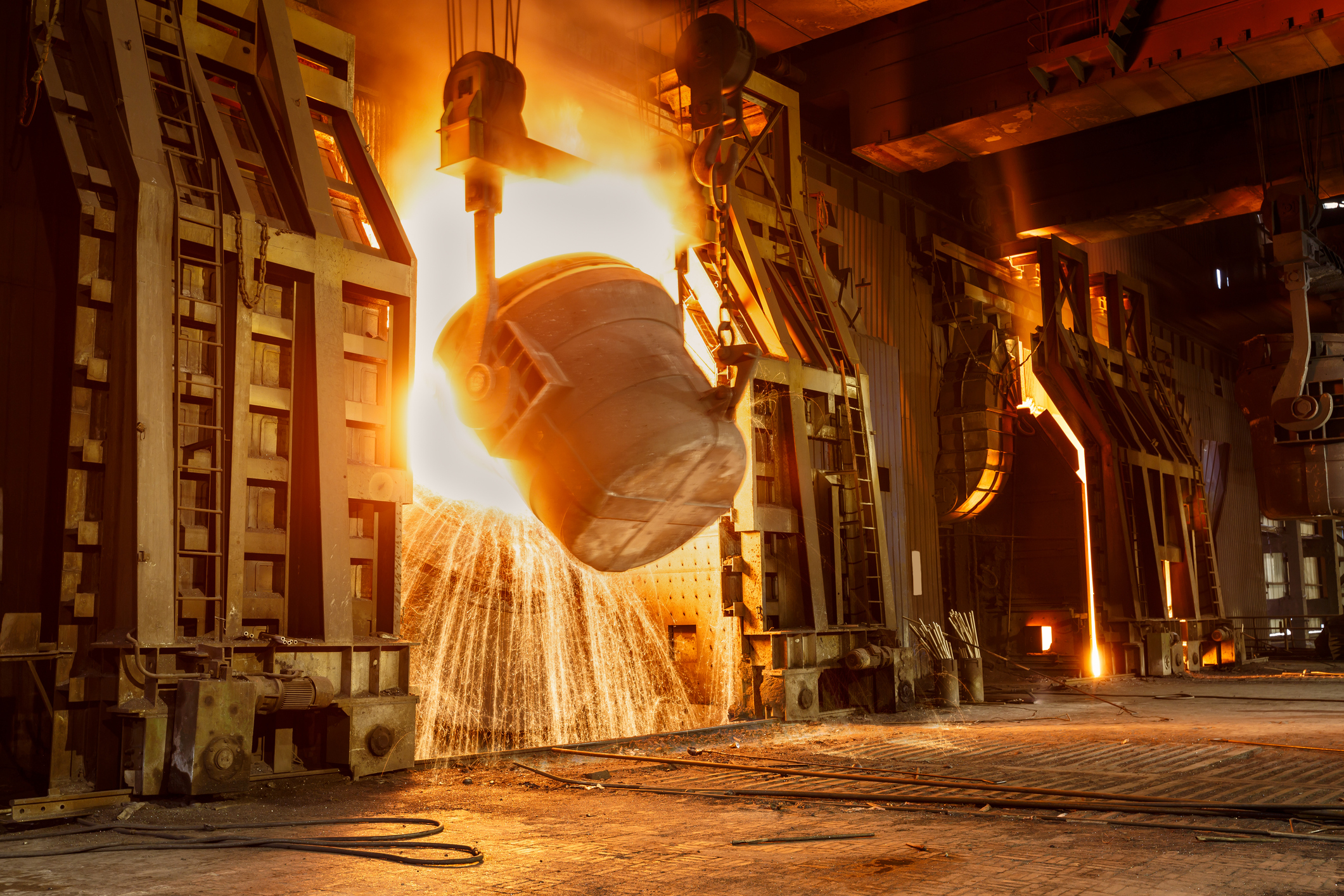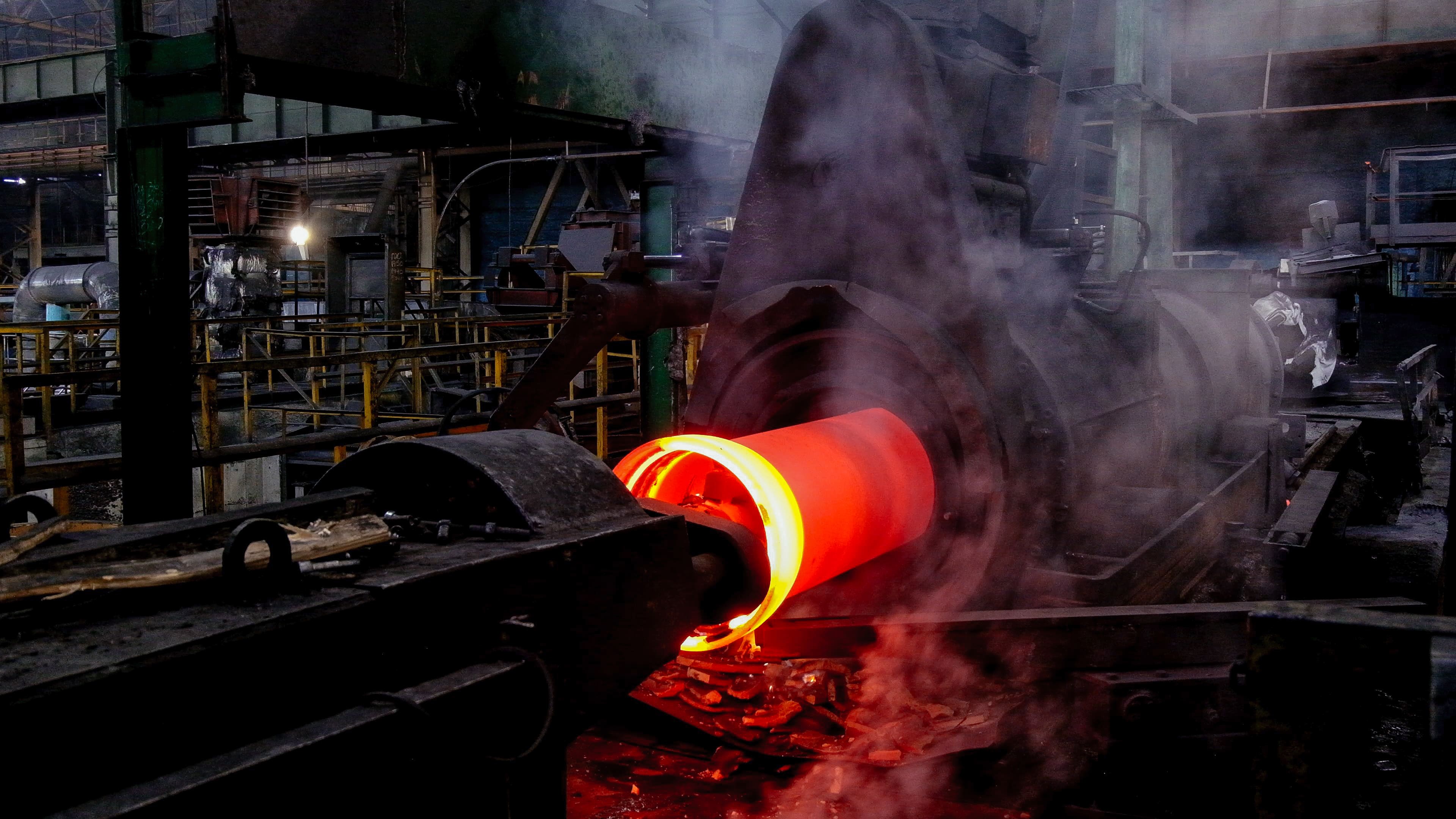

Website Design Copyright 2025 © 竹新化學股份有限公司 & 頂烽企業股份有限公司
All Rights Reserved. 網頁設計 by 覺醒設計

Calcium Oxide's Outstanding Applications in the Steel Industry
Introduction:
In the modern steel industry, the constant pursuit of increasing production efficiency and reducing costs is a paramount goal. Calcium oxide, as a versatile and highly efficient chemical substance, has demonstrated remarkable application value in steel production. This article delves into the extensive applications of calcium oxide in the steel industry, ranging from improving smelting efficiency to enhancing product quality, unveiling the mysterious veil of this indispensable chemical assistant.

Calcium oxide, also known as lime, is a common inorganic compound, and its basic characteristics influence its widespread applications in various fields. Here are some basic characteristics of calcium oxide:
The chemical formula of calcium oxide is CaO, indicating that it is composed of one calcium atom and one oxygen atom.
It is a binary compound formed by the elements calcium and oxygen.
At room temperature, calcium oxide exists as a white solid with a crystalline structure.
Due to its high melting point (2,572°C) and boiling point, calcium oxide is typically in a solid state at normal temperatures.
Calcium oxide is practically insoluble in water, indicating its very low solubility in water. However, when calcium oxide reacts with water, it forms calcium hydroxide (Ca(OH)₂), which is a more soluble compound.
Calcium oxide exhibits strong reducibility at high temperatures and can react with many non-metallic elements.
It reacts with acids to form the corresponding salts and water, a reaction commonly known as neutralization.
Calcium oxide has a certain degree of hygroscopicity, capable of absorbing moisture from the atmosphere to form calcium hydroxide.
This hygroscopic property allows calcium oxide to be used as a desiccant in some applications.
Calcium oxide is a relatively stable compound and is not easily decomposed. However, in humid environments, it may gradually transform into calcium hydroxide due to its hygroscopic nature.
Calcium oxide finds wide applications in metallurgy, construction materials, chemical industry, environmental protection, and more.
In the construction materials industry, calcium oxide is a crucial raw material for manufacturing lime, cement, etc.
In metallurgy, it serves as a key additive in metal smelting processes.
In environmental protection, it can be used for treating air and water pollution.
( For more details, please refer to: Calcium Oxide Product Introduction )
( For more details, please refer to: Calcium Hydroxide Product Introduction )
The application of calcium oxide in the steel smelting process primarily manifests in its impact on coke, ore, and flux.
Firstly, calcium oxide serves as a catalyst for thermal reactions, facilitating the rapid reduction reactions of coke and ore, thereby enhancing smelting efficiency. Secondly, it can combine with harmful elements such as sulfur and phosphorus, forming easily separable oxides, effectively reducing impurity levels during smelting and improving product quality.
In the steel smelting process, calcium oxide, as a crucial additive, plays a multifaceted role, improving production efficiency and enhancing product quality. Below are specific details of calcium oxide's applications in the smelting process:
Calcium oxide exhibits excellent catalytic performance at high temperatures, especially in coke reduction reactions.
As coke undergoes reduction reactions with iron ore, calcium oxide acts as a catalyst, accelerating reaction rates and promoting the formation of metallic iron.
This catalytic effect contributes to an increased smelting rate, reducing production time and energy consumption.
During the smelting process, sulfur and phosphorus in raw materials are common impurities in steel, adversely affecting the final product's quality.
Calcium oxide has the ability to bind with sulfur and phosphorus, forming stable oxides, making these harmful elements easier to separate.
By adding calcium oxide, the content of sulfur and phosphorus in steel can be effectively reduced, thereby improving steel purity and quality.
At high temperatures, calcium oxide can react with other components, forming compounds with lower melting points, thereby reducing the overall system's melting point.
This reduction in the melting point helps decrease the energy required during the smelting process, enhancing energy efficiency.
Simultaneously, it aids in improving fluidity, making molten iron easier to handle and process.
The addition of calcium oxide can regulate the composition and properties of slag, enhancing its liquefaction ability.
This contributes to the effective separation of metal and slag, improving the technological process during smelting and reducing energy consumption.
Additionally, it reduces the oxygen content inside the furnace, further promoting the progress of reduction reactions.

As a versatile chemical substance, calcium oxide, in its application during steel smelting processes, not only contributes to improved production efficiency and product quality but also has positive effects on environmental protection.
The following details explore the role of calcium oxide in environmental protection:
During the smelting process, harmful gasses such as sulfur dioxide (SO2) and nitrogen oxides (NOx) are often emitted, causing severe environmental pollution.
Calcium oxide possesses excellent absorption capabilities, reacting with sulfur dioxide and nitrogen oxides to form relatively stable compounds like calcium sulfate and calcium nitrate.
This chemical reaction effectively reduces the emission of harmful gasses, making the smelting process more environmentally friendly.
In the smelting process, generated slag and other solid waste often pose environmental challenges.
By adding calcium oxide, the formation and characteristics of slag can be optimized, making it easier to handle and recycle.
This helps reduce the generation of solid waste while increasing the efficient utilization of by-products from the smelting process.
The absorption capability of calcium oxide extends beyond harmful gasses; in certain situations, it can also absorb suspended particles and volatile organic compounds.
This characteristic contributes to improving air quality during the smelting process by reducing pollutants in the air.
By lessening the burden on the atmosphere, calcium oxide actively plays a role in protecting the ecological environment.
The application of calcium oxide can also promote a circular economy in the smelting process.
For example, through the treatment of exhaust gases and solid waste, calcium oxide can be recovered and reused, achieving efficient resource utilization.
This helps reduce dependence on natural resources and drives the industrial system towards a more environmentally friendly and sustainable direction.
In addition to its role in the smelting process, calcium oxide plays a crucial role in enhancing steel products. The addition of calcium oxide in the manufacturing process can adjust the chemical composition of steel, improving its mechanical properties, corrosion resistance, and wear resistance. This enables manufacturers to produce more durable and high-performance steel, meeting the diverse requirements of various applications.
Calcium oxide not only plays a critical role in the steel smelting process but also holds significant importance in enhancing the final steel products. The following details the role of calcium oxide in improving steel products:
The addition of calcium oxide can adjust the chemical composition of steel, altering the carbon content and the proportion of other alloy elements.
This helps produce steel that meets specific application requirements, such as high-strength steel and stainless steel.
Simultaneously, this adjustment also enhances the corrosion resistance and wear resistance of the steel.
The addition of calcium oxide can influence the crystal structure of steel, thereby improving its mechanical properties, including strength and elastic modulus.
This improvement allows manufacturers to produce more durable and high-performance steel, meeting the demands of various industrial applications.
During the steel smelting process, certain non-metallic inclusions such as oxides and sulfides can be generated.
By adding calcium oxide, these inclusions can be effectively adsorbed and combined, reducing their content in the steel and enhancing its purity.
This contributes to improving the processability of the steel and maintaining consistent product quality.
The presence of calcium oxide contributes to the formation of higher hardness phases, such as carbides, enhancing the hardness of the steel.
This increased hardness improves the wear resistance of the steel, making it more suitable for high-wear applications such as manufacturing tools and wheels.
During the cooling process of steel, the presence of calcium oxide helps control the crystal structure of the steel, influencing its performance.
This control ensures that the steel has a more uniform grain structure, improving its fatigue strength and tensile strength.
The application of calcium oxide in the steel industry is diverse, encompassing the enhancement of smelting efficiency, improvement of product quality, and positive environmental impact.
Its unique characteristics make it an indispensable ally in steel production, injecting new vitality into the industry's development. In the future, with continuous technological advancements, we have reason to believe that calcium oxide will continue to play an increasingly crucial role in the steel industry, bringing forth more innovations and breakthroughs.
We use cookies to collect and analyze information on site performance and usage. By Clicking "Continue" or by clicking into any content on this site, you agree to allow cookies to be placed. To find out more, please visit our privacy policy。
CONTINUE GO TOP
GO TOP
